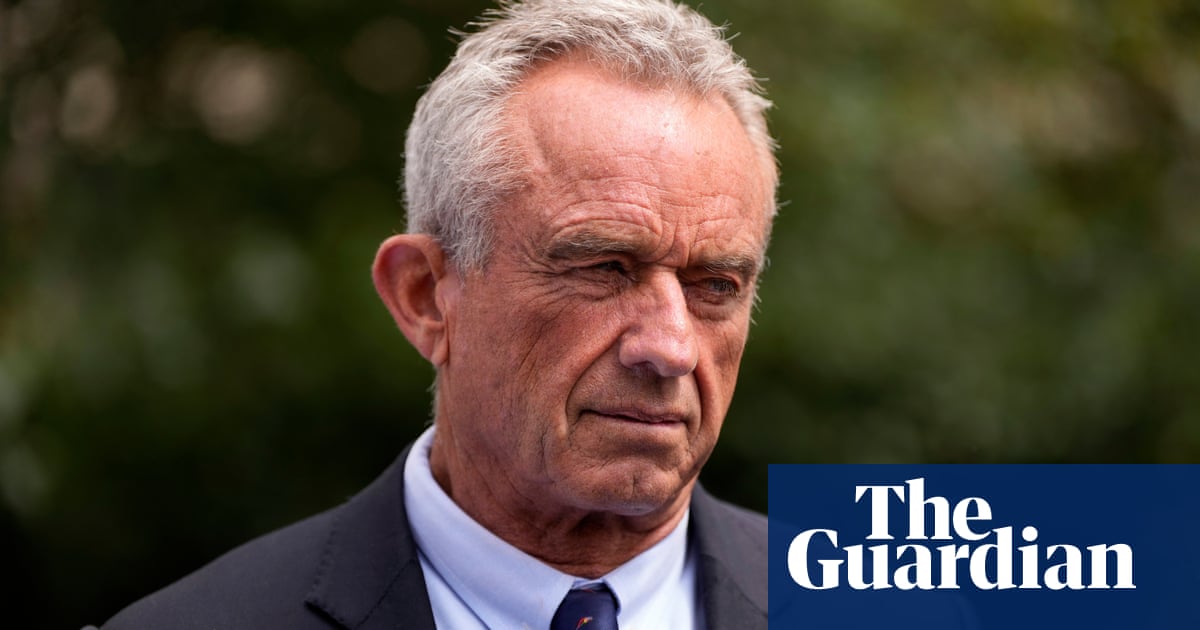You are using an out of date browser. It may not display this or other websites correctly.
You should upgrade or use an alternative browser.
You should upgrade or use an alternative browser.
The Biden Administration and All Things Politics
- Thread starter Avery
- Start date
BENTLEY
Well-Known Member
I doubt many on here have read Orwell. They remain ignorant victims of Big Brother’s propaganda.
Sent from my iPhone using Tapatalk
The Thriller
Well-Known Member
It’s pretty funny how RFK went to try and peal away low info voters from Democrats but ended up only hurting Trump. Goes to show what the makeup of the two parties currently is right now. Racists, anti social people, cranks, kooks, and weirdos just overwhelming vote for Trump.
RFK Jr considers dropping out to help Trump, running mate says
Nicole Shanahan says she and independent 2024 candidate could ‘walk away and join forces with Donald Trump’www.theguardian.com
PJF
Well-Known Member
PJF
Well-Known Member
PJF
Well-Known Member
PJF
Well-Known Member
fishonjazz
Well-Known Member
Contributor
2018 Award Winner
2019 Award Winner
20-21 Award Winner
2022 Award Winner
2023 Award Winner
2024 Award Winner
2025 Award Winner
Donald Trump Jr., the former president's eldest son, Tucker Carlson, the influential right-wing commentator who spoke at Trump's convention, and Omeed Malik, a business executive and donor who has contributed to both Trump and Kennedy’s campaigns this election cycle, have been working behind the scenes to convince the independent candidate to end his bid for the White House and endorse Trump.
Now, Kennedy is planning to suspend his campaign on Friday and to throw his support to Trump, two sources familiar with his plans told NBC News, though they noted that talks are ongoing.
Trump Jr., Carlson and Malik each held a series of meetings and calls with each candidate to negotiate an exit and endorsement by Kennedy.
A pact between Trump and Kennedy is an outcome Democrats — including some other Kennedys — have been predicting for some time. Jack Schlossberg, John F. Kennedy’s grandson, told NBC News on Wednesday that he “wouldn’t be surprised if he was working for President Trump at some point or in the past.”
RFK selling out to trump. Doubt it ends well for him. Joining trump rarely does.
PJF
Well-Known Member
Let's see how you guys defend this BS.
View: https://x.com/libsoftiktok/status/1826630272991068556
View: https://x.com/libsoftiktok/status/1826663580306980999
View: https://x.com/libsoftiktok/status/1826630272991068556
View: https://x.com/libsoftiktok/status/1826663580306980999
Last edited:
PJF
Well-Known Member
fishonjazz
Well-Known Member
Contributor
2018 Award Winner
2019 Award Winner
20-21 Award Winner
2022 Award Winner
2023 Award Winner
2024 Award Winner
2025 Award Winner
Few people have invested more personal time and energy in anything than Donald Trump has invested in convincing the world, and perhaps himself, that he is more popular than the publicly available evidence would suggest. (what a great and true sentence)
Trump has been the Republican nominee twice before, earning about 3 million fewer votes than Hillary Clinton in 2016 and about 7 million fewer votes than Joe Biden four years later. His response each time was to insist that the numbers were wrong or insignificant or both, claiming after 2016 that there was some undetected fraud that led to his losing California and New Hampshire (among other places) and claiming after 2020 that there was undetected fraud, well, everywhere.
But there are also many other facets of his efforts to prove that his popularity extends beyond the visible world. How else can we explain his obsession with the size of rally crowds or with television ratings or with the number of people who engage with him on social media?
As we saw in the aftermath of the 2020 election, the point of intersection between Trump’s interest in proving his popularity and actual electoral outcomes is a dangerous place to be. Trump spent much of his last year in office insisting that his reelection was all-but-certain unless Democrats cheated — which, he said repeatedly (without evidence but with bad argumentation), they were planning to do. Then he lost, and there was chaos.
He is at it again. At a rally in North Carolina on Wednesday, Trump insisted that the only way he could lose in November would be if his opponents were to cheat.
“Our primary focus is not to get out the vote,” he said. “It’s to make sure they don’t cheat, because we have all the votes you need. You can see at every house along the way, has signs: Trump, Trump, Trump, Trump-Vance, Trump-Vance.”
People familiar with political campaigns can’t read this sentence because they just smacked their foreheads in disbelief. Disbelief first of all at the contrast Trump draws between not needing to turn out votes and there are lots of votes out there. Which is why you want to have a good turnout/get-out-the-vote operation, to ensure those ballots are cast.
That assumes that the votes are actually out there, of course, of which — the other reason all those foreheads that got smacked — lawn signs are not a strong indicator. Candidates like lawn signs because they feel like a measure of support. But they are not. They aren’t according to research, they aren’t as his allies have seen, and they aren’t as he should have seen. They are no more an indication of robust political support than, say, a nonscientific poll conducted by a partisan on social media.
Harris became the Democratic nominee, and perceptions of who will win have drawn even. That’s in part because Democratic confidence in their candidate has risen. It’s in part, too, because Republicans are less confident than they were. And that’s not a measure of some new cheating scheme that accompanied Harris; it’s clearly mostly a recognition that she is polling better.
But this perception hasn’t made its way up to the guy at the top of the Republican ticket. Instead of saying — as candidates often do and as Harris’s running mate, Minnesota Gov. Tim Walz, did on Wednesday — that the race is close and that he, therefore, needs his base to commit to voting, Trump says it all comes down to imaginary cheating.
Trump can lose in November, and, if history is any guide, he may well get fewer votes than Harris. But he can’t or won’t acknowledge this, and his team and supporters can’t or won’t act as if it’s a possibility as a result.
Few people have invested more personal time and energy in anything than Donald Trump has invested in convincing the world, and perhaps himself, that he is more popular than the publicly available evidence would suggest. (what a great and true sentence)
Trump has been the Republican nominee twice before, earning about 3 million fewer votes than Hillary Clinton in 2016 and about 7 million fewer votes than Joe Biden four years later. His response each time was to insist that the numbers were wrong or insignificant or both, claiming after 2016 that there was some undetected fraud that led to his losing California and New Hampshire (among other places) and claiming after 2020 that there was undetected fraud, well, everywhere.
But there are also many other facets of his efforts to prove that his popularity extends beyond the visible world. How else can we explain his obsession with the size of rally crowds or with television ratings or with the number of people who engage with him on social media?
As we saw in the aftermath of the 2020 election, the point of intersection between Trump’s interest in proving his popularity and actual electoral outcomes is a dangerous place to be. Trump spent much of his last year in office insisting that his reelection was all-but-certain unless Democrats cheated — which, he said repeatedly (without evidence but with bad argumentation), they were planning to do. Then he lost, and there was chaos.
He is at it again. At a rally in North Carolina on Wednesday, Trump insisted that the only way he could lose in November would be if his opponents were to cheat.
“Our primary focus is not to get out the vote,” he said. “It’s to make sure they don’t cheat, because we have all the votes you need. You can see at every house along the way, has signs: Trump, Trump, Trump, Trump-Vance, Trump-Vance.”
People familiar with political campaigns can’t read this sentence because they just smacked their foreheads in disbelief. Disbelief first of all at the contrast Trump draws between not needing to turn out votes and there are lots of votes out there. Which is why you want to have a good turnout/get-out-the-vote operation, to ensure those ballots are cast.
That assumes that the votes are actually out there, of course, of which — the other reason all those foreheads that got smacked — lawn signs are not a strong indicator. Candidates like lawn signs because they feel like a measure of support. But they are not. They aren’t according to research, they aren’t as his allies have seen, and they aren’t as he should have seen. They are no more an indication of robust political support than, say, a nonscientific poll conducted by a partisan on social media.
Harris became the Democratic nominee, and perceptions of who will win have drawn even. That’s in part because Democratic confidence in their candidate has risen. It’s in part, too, because Republicans are less confident than they were. And that’s not a measure of some new cheating scheme that accompanied Harris; it’s clearly mostly a recognition that she is polling better.
But this perception hasn’t made its way up to the guy at the top of the Republican ticket. Instead of saying — as candidates often do and as Harris’s running mate, Minnesota Gov. Tim Walz, did on Wednesday — that the race is close and that he, therefore, needs his base to commit to voting, Trump says it all comes down to imaginary cheating.
Trump can lose in November, and, if history is any guide, he may well get fewer votes than Harris. But he can’t or won’t acknowledge this, and his team and supporters can’t or won’t act as if it’s a possibility as a result.
The FBI should arrest The Rapist for fomenting an insurrection if he promotes violence again.
PJF
Well-Known Member
fishonjazz
Well-Known Member
Contributor
2018 Award Winner
2019 Award Winner
20-21 Award Winner
2022 Award Winner
2023 Award Winner
2024 Award Winner
2025 Award Winner
Younger woman of color vs. older white man. Middle class vs. silver spoon. Immigrant family vs. family separation. Future vs. past. Service vs. self. Care vs. cruelty. Prosecutor vs. criminal.
Younger woman of color vs. older white man. Middle class vs. silver spoon. Immigrant family vs. family separation. Future vs. past. Service vs. self. Care vs. cruelty. Prosecutor vs. criminal.
Insane vs. not insane.
Proving that most religious people, along with most mormons, who overwhelmingly vote for The Rapist, are farcical idiots who have no morals whatsoever and are living the biggest lie.
Christians x 2024 election(Aug 9-13, WaPo ABC Ipsos poll)
White evangelicals: Harris 15% Trump 78%
White mainline Protestants: Harris 41%. Trump 54%
White Catholics: Harris 37%. Trump 56%
Black Protestants: Harris 89%. Trump 9%
Hispanic Catholic: Harris 50%. Trump 47%
Christians x 2024 election(Aug 9-13, WaPo ABC Ipsos poll)
White evangelicals: Harris 15% Trump 78%
White mainline Protestants: Harris 41%. Trump 54%
White Catholics: Harris 37%. Trump 56%
Black Protestants: Harris 89%. Trump 9%
Hispanic Catholic: Harris 50%. Trump 47%



